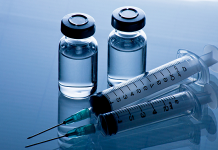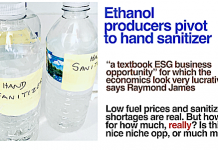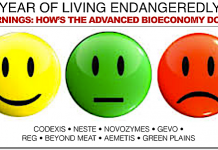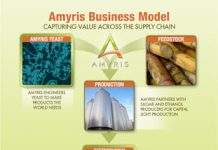Jim Lane
![amber-green[1].jpg](http://www.altenergystocks.com/wp-content/uploads/2017/08/amber_green_1_.jpg)
As many technologies pivot or delay, one train keeps chugging on its route to biosuccinic acid, and markets like BDO, resins and polyols.
What is it about the business model that keeps on working? What can every integrated biorefinery learn from its approach?
In Minneapolis, BioAmber (BIOA) just announced a contract to supply a minimum of 80% of PTTMCC Biochem’s total bio-succinic acid needs until the end of 2017.
PTTMCC Biochem is a joint venture established by Mitsubishi Chemical and PTT, Thailand’s largest oil and gas company, to produce and sell polybutylene succinate (PBS), a biodegradable plastic made from succinic acid and 1,4 butanediol (BDO). The JV partners are building a PBS plant in Map Ta Phut, Rayong, Thailand that will have an annual production capacity of 20,000 tons, and is expected to be operational in the first half of 2015.
Now, let’s put this in context. According to NNFCC last year, the global market for succinic acid is between 30,000 and 50,000 tonnes per year. If this were mobile phones, it’d be like coming out of the box with a billion hand-set order. A single offtake deal, with a take-or-pay component, for something like one-fifth of global capacity? Huge.
The PBS plant in Thailand will consume approximately 14,000 tons of succinic acid per year at full capacity under the new agreement, BioAmber could supply a minimum of 11,200 tons of bioisuccinic acid if that PBS plant operates at full capacity. BioAmber plans to supply PTTMCC from its 30,000 ton per year plant under construction in Sarnia, Canada.
Putting BioAmber into a larger context
What is exactly so special about a company making roughly 65 million pounds of a little-known renewable chemical, with a historically tiny global market?
After all, that is roughly equivalent, by tonnage, to a 10 million gallon first-gen biofuels plant the kind that generally closes down these days because of a lack of economies of scale.
There are two reasons that we are looking carefully at BioAmber.
First, as former DOE Biomass Program Manager Paul Bryan opined at ABLC this year: “Focus on the right products first.” Bryan keyed in on biosuccinic in his ABLC presentation, highlighting the opportunities and advantages relating to the utilizing the oxygen in biomass.
![bryan-succinic[1].png](http://www.altenergystocks.com/wp-content/uploads/2017/08/bryan_succinic_1_.png)
Second, BioAmber is avowedly pursuing a strategy based in careful aggregation of strategic partners that bring investment and offtake as well as financing relationships, while building further applications for their molecules in work with R&D partners that could be expected to translate into commercial partners down the line. Which is to say, starting with an economically and environmentally advantaged molecule and then working in partnership with downstream customers to establish markets for that molecule.
It’s very different than the conventional biobased fuels strategy, which has been to set mandates to create market certainty, and use that to create a favorable financing environment, and encourage engagement with incumbents.
BioAmber’s first commercial plant in Sarnia: construction
Moving back to BioAmber, let’s look at the construction timeline which has shifted back 4-6 weeks. The company’s first commercial has slipped into early 2015 unless the company can make up some time, which it indicates it might.
BioAmber CEO Jean-François Huc reports: “We’ve completed over 60% of the detailed engineering and are now focused on completing the detailed piping and electrical instrumentation work…For most for equipment purchases and work packages…we’re seeing bids there are coming in on or slightly below budget…giving us an increasing confidence that we can bring the plant construction in on budget.”
“To date we’ve lost approximately eight work days due to extreme cold and snow. We’ve also identified the potential for delays in a few key equipment deliveries. The current trend suggests that if we do not recover the lost days due to weather moving forward and we’re not able to mitigate the risks around the equipment delivery dates, the project completion could be delayed by up to four to six weeks.”
Commissioning
The commissioning period is estimated at five months meaning that the plant could be operating in steady-state as soon as the end of the first half of 2015 and BioAmber’s sales projections for 2015 are in line with that.
Huc comments: “When you mechanically complete and you commission and startup your plant, realistically you anticipate a three to five month period, three months being aggressive and five months being more conservative…Our expectation is that the plant would be running in a continuous stable mode after five months and…we hope to sell about 45% of the nameplate capacity in the first year.
BioAmber’s first commercial: customers
The company, meanwhile, has been hard at work on bringing on customers. The combination of Vinmar and PTT contracts will tie up nearly two-thirds of the plant’s nameplate capacity in 2015, and the biosuccinic requirements of the Vinmar deal will more than use the full capacity of the Sarnia plant (though Sarnia can be expanded to as much as 50,000 metric tons).
Huc added: “We brought on 18 new customers in 2013 that will help to base load Sarnia and we worked with a number of companies to test our bio-succinic acid in new and emerging applications that offer the prospect of significant growth.
New applications and markets
The key for BioAmber to reach beyond the limited direct market for succinic acid is through the development of new markets using low-cost biosuccinic.
Huc comments: “Over the past year we worked with a number of innovative companies that validated our Bio-SA in several new applications.
“For example, in artificial leather they demonstrated that the polyester polyol made with Bio-SA offers better aesthetics including softer touch than the polyols made with adipic acid. This market reportedly consumes 150,000 tonnes of adipic acid annually. Another example is in foams made with Bio-SA and recycled PET. The Bio-SA provided performance benefits to the polyols that were made from recycled PET, including reduced viscosity, increased density and tensile strength, reduced brittleness and improved stability in addition to increased renewable content. These foams have been developed for a number of applications including insulation panels and the near-term market is estimated at 15,000 to 20,000 tonnes per year but with significant growth potential.
“Several coatings companies have also demonstrated that resins and polyols made with the Bio-SA offer advantages over adipates in paints and coatings. These advantages include better gloss retention and higher renewable content. We now believe that the total addressable market for Bio-SA in coatings is approximately 600,000 tonnes per year.
“Our goal is to sign supplier agreements with market innovators in these emerging market segments and to announce product launches incorporating Bio-SA over the coming year.”
The future BDO plant
Let’s look at BDO in some detail.
As BioAmber explained at the time of its IPO: “Succinic acid can be used to manufacture a wide variety of products used every day, including plastics, food additives and personal care products, and can also be used as a building block for a number of derivative chemicals. Today, petroleum-derived succinic acid is not used in many potential applications because of its relatively high production costs
and selling price. We believe that our low-cost production capability and our development of next-generation bio-succinic derived products including 1,4 BDO, which is used to produce polyesters, plastics, spandex and other products, will provide us with access to a more than $10 billion market opportunity.”
The Vinmar relationship. The BDO opportunity signaled in the IPO became more vivid early this year when Vinmar has committed to purchase, in a 15-year master off-take agreement, 100% of the BDO produced in a 100,000 ton per year capacity plant that BioAmber plans to build in North America and commission in 2017, Under the terms agreement, Vinmar also plans to invest in the BDO plant, taking a minority equity stake of at least 10%, and has a right of first refusal to invest in and secure 100% of the off-take from a second BDO plant.
More on Vinmar. Vinmar has been selling close to 50,000 tonnes of BDO per year for the past several years. Vinmar also has project development and financing expertise having helped several partners secure project financing by leveraging Vinmar’s banking relationships and the take-or-pay agreements that they sign.
Pricing: Huc reports: “At recent BDO prices and to give you a sense of those the global average price over the past three years was approximately $2,800 per metric tonne according Tecnon OrbiChem data, the annual sales from this plant would be approximately 280 million representing over 4 billion in revenues over the term of the contract.”
Execution risk. Producing BDO from succinic at scale, at commercially feasible rates well, there’s work left to do. BioAmber reports that “we’re continuing to work with our exclusive partner Evonik to scale up and commercialize the catalysts we have licensed from DuPont (DD).”
The timeline: Huc comments, “We’ve begun the site selection process in North America, building on the site selection process we had run a few years ago for Sarnia a lot, as you can imagine the front-end of this BDO plant it’s just a big succinic acid plant, so most of our requirements in terms of site selection are identical to those we used in finally choosing Sarnia…in parallel we’ll be working to see what kind of government support we can secure for that project so, that has to dovetail with a toll manufacturing facility coming online in the U.S. and a successful startup of the Sarnia plant and ideally all those things come together in the summer of 2015 so that we’re in a position to move to a financial close with a group of lenders and equity partners.
Cash burn
The company reports: “Our goal is to keep our cash burn under 20 million in 2014 while spending more money on BDO development and engineering for the remainder of this year as we prepare to bring the BDO toll manufacturing facility online next year.” The company has $83.7 million cash in hand, after reporting a net loss for 2013 of $33M, after a $39M loss in 2012.
PTT and Myriant
We’ll be watching that 2017 date carefully, for another reason. It may well suggest a completion date for a biosuccinic acid plant that PTT has been investigating with Myriant. PTT has, since January 2011, been a high-visibility strategic investor in Myriant, putting $60M in the company a few years back and avowedly the companies have been signaling interest in PBS.
Reaction from BioAmber on the PTT deal
“This first succinic acid take-or-pay agreement is an important milestone for BioAmber,” said Babette Pettersen, BioAmber’s Chief Commercial Officer. “This contract guarantees significant sales volume for our Sarnia plant during its first three years of operation. PTTMCC is a major new buyer of bio-succinic acid and locking up this substantial volume commitment will strengthen our market leadership,” she added.
Jim Lane is editor and publisher of Biofuels Digest where this article was originally published. Biofuels Digest is the most widely read Biofuels daily read by 14,000+ organizations. Subscribe here.








